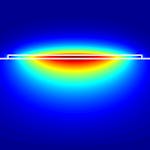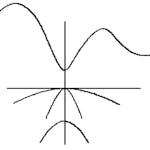Description
This course will take you on a tour of the technologies used in particle accelerators, including: The microwave system that generates electromagnetic waves that accelerate particles; Magnet technology for magnets that guide and focus particle beams; The monitoring systems that determine the particle beam's quality; Finally, vacuum systems that generate ultra-high vacuum so that accelerated particles do not collide with molecules or atoms. Isn't it exciting?
Quizzes, one for each of the four modules, are used to grade the course. There are also a number of training quizzes to help you along the way. The course has four modules: RF-systems, Magnet technology, Beam diagnostics, and Vacuum techniques. There are 48 lectures in total, with each lecture consisting of a 2-4 minute video presentation. Some of the lectures are followed by short texts with additional information, and all of them should be an interesting collection for you to engage with.
Syllabus :
1. RF-systems
- General introduction
- Outline of the RF-system
- Pill-box cavities
- Energy
- Coaxial waveguides
- Rectangular waveguides
- Computer simulations
- The circulator
- Introduction to RF-amplifiers
- The klystron
- General properties
- Drift tube linac (DTL)
- Elliptical cavity
- Traveling wave cavity
2. Magnet technology for accelerators
- Basic iron magnet concepts, magnet types and design
- Fast ramp magnets
- Superconducting magnets
- Permanent accelerator magnets and insertion devices
3. Beam Diagnostics
- Motivation to beam diagnostics
- Important concepts in beam diagnostics
- Describing the beam
- Faraday cup
- Wall current monitor
- Beam Current Transformer
- Button pick-up
- Cavity BPM
- OTR and Scintillating screens
- Wire scanner and SEM grid
- Synchrotron radiation monitor
- An introduction to longitudinal profile
- Transversely deflecting cavity
- Streak camera
- Energy (profile) monitoring: Spectrometer and ToF
- Energy along a single bunch
- Introduction to beam loss and machine protection.
- Ionization chamber
- Scintillation counter
4. Basics of Vacuum techniques
- Motivation
- Introduction to pressure/vacuum
- Three states of residual gas
- Definition of vacuum regions
- Composition of residual gas
- Introduction to pumps
- Gas-Displacement Pumps
- Kinetic Vacuum Pumps
- Gas-Binding Pumps
- Vacuum Gauges
- Vacuum components
5. You have now successfully finalized the course!









